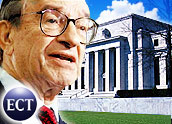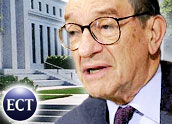
Federal Reserve policy-makers suggested that interest rates were lower than needed to keep inflation under control and that the pace of any future increases would depend on economic conditions, according to minutes of the Fed’s February meeting released today.
Fed Chairman Alan Greenspan and his colleagues boosted a key short-term interest rate by one-quarter percentage point to 2.50 percent at that meeting February 1-2. It marked the sixth quarter-point increase since the Fed embarked on its rate-raising campaign in June 2004.
Even with these increases, rates, after adjusting for inflation, were still low, Fed policy-makers said.
More Rate Hikes
Rates were “generally seen as remaining below levels that might reasonably be associated with maintaining a stable inflation rate over the medium term,” according to the minutes.
“The pace of policy moves at upcoming meetings, however, would depend on incoming data,” the minutes said.
Fed policy-makers, in a brief statement explaining their decision to boost rates February 2, decided to stick with a gradual approach to raising rates. They said future rate increases were likely to be “measured.”
Greenspan, delivering the Fed’s twice-a-year economic outlook to Congress last week, didn’t use the word “measured” in his prepared testimony, touching off speculation among some economists about the speed of the Fed’s rate-raising campaign in the months ahead.
Pay Raises
The Fed chief indicated, in his congressional appearances, that how inflation unfolds will shape whether Fed policy-makers will need to speed up or slow down that campaign.
One factor to keep an eye on is whether companies — amid slowing productivity growth — boost workers’ salaries and then pass along those higher costs onto customers, Fed-policy makers said. “Careful attention would need to be paid” in this area, they said.













































Social Media
See all Social Media